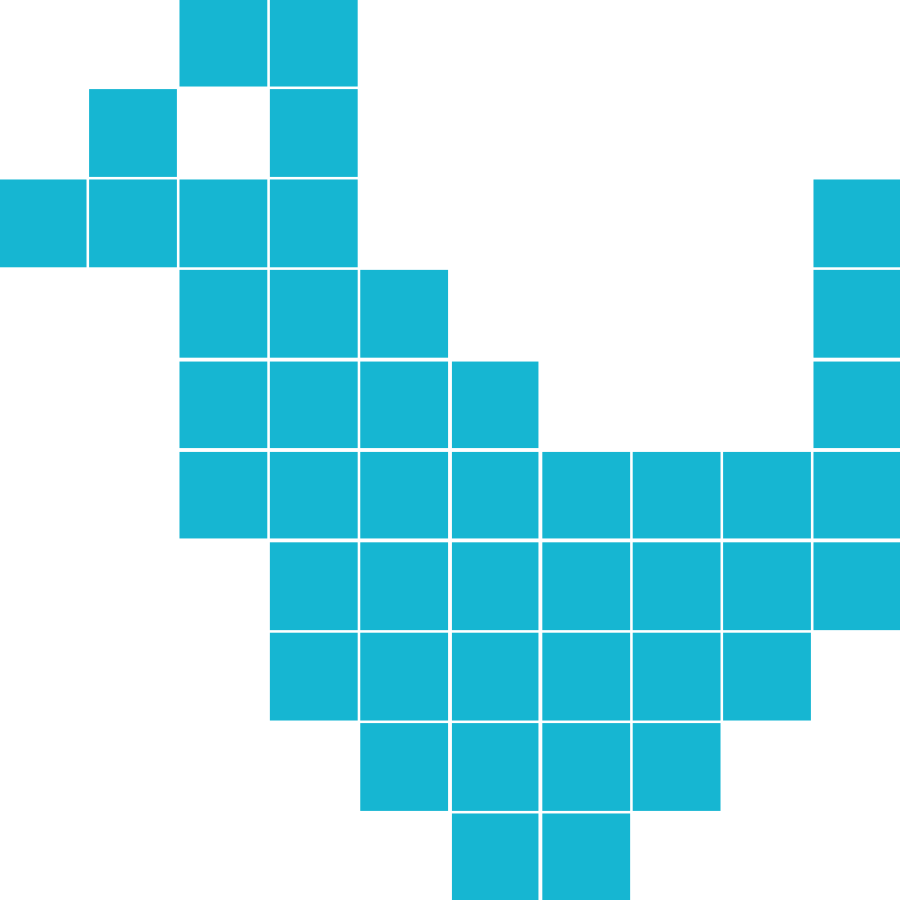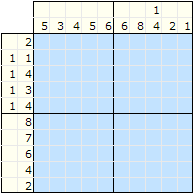
Nonograms are picture logic puzzles in which cells in a grid have to be colored or left blank according to numbers given at the side of the grid to reveal a hidden picture. In this puzzle type, the numbers measure how many unbroken lines of filled-in squares there are in any given row or column. For example, a clue of "4 8 3" would mean there are sets of four, eight, and three filled squares, in that order, with at least one blank square between successive groups.
These puzzles are often black and white but can also have some colors. If they are colored, the number clues will also be colored in order to indicate the color of the squares. Two differently-colored numbers may or may not have a space in between them.

In 1987, Non Ishida, a Japanese graphics editor, won a competition in Tokyo by designing grid pictures using skyscraper lights which are turned on or off. At the same time and with no connection, a professional Japanese puzzler named Tetsuya Nishio invents the same puzzles. From this, the concept of Paint by numbers and picture-forming logic puzzles was born.
Paint by numbers puzzles started appearing in Japanese puzzle magazines. Nintendo picked up on this puzzle fad a while back and released two "Picross" (Picture Crossword) titles for the Game Boy and nine for the Super Famicom (eight of which were released in two-month intervals for the Nintendo Power Super Famicom Cartridge Writer as the "NP Picross" series) in Japan. Only one of these, Mario's Picross for the Game Boy, was released in the United States.
In 1988, Non Ishida published three picture grid puzzles in Japan under the name of "Window Art Puzzles".
In 1990, James Dalgety in the UK invented the name Nonograms after Non Ishida, and The Sunday Telegraph started publishing them on a weekly basis.
In 1993, First book of Nonograms was published by Non Ishida in Japan. The Sunday Telegraph published a dedicated puzzle book titled the "Book of Nonograms". Nonograms are also published in Sweden, United States, South Africa and other countries.
In 1995, paint by numbers started appearing on hand held electronic toys such as Game Boy and on other plastic puzzle toys. Increased popularity in Japan launched new publishers and by now there were several monthly magazines some of which contain up to 100 puzzles.
In 1996, the Japanese arcade game Logic Pro was released by Deniam Corp, with a sequel released the following year. Both titles are emulated by MAME.
In 1998, The Sunday Telegraph ran a competition to choose a new name for their puzzles. Griddlers was the winning name that readers chose. Pic-a-Pix puzzles in Germany with PM Magazin, a wholly owned subsidiary of Gruner + Jahr, the publishers of the famous Stern magazine.
In 1999, Paint by numbers were published by Sanoma Uitgevers in Holland, Puzzler Media (formerly British European Associated Publishers) in the UK and Nikui Rosh Puzzles.
2006.01.01 - GameLO.net Website Premiere.
Nonograms are also known with many other names, including: gameLO, Crucipixel, Edel, FigurePic, Grafilogika, Griddlers, Hanjie, Illust-Logic, Japanese Crosswords, Japanese Puzzels, Kare Karala!, Logic Art, Logic Square, Logicolor, Logik-Puzzles, Logimage, Maľované krížovky, Nonograms, Oekaki Logic, Oekaki-Mate, Paint by Numbers, Paint Logic, Pic-a-Pix, Picross, Pixel Puzzles, Shchor Uftor, Tsunami, Zakókodované obrázky, Malowanie liczbami, Japońska Krzyżówka, Japońskie Puzzle, Japoński Obrazek.
If you want to learn more go to the Wikipedia: